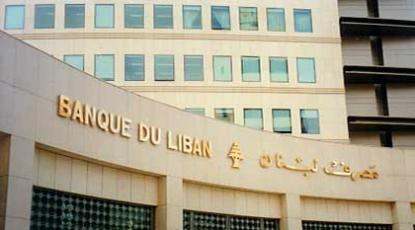 Capital Intelligence Ratings (CI Ratings), the international credit rating agency, announced that it has affirmed Lebanon’s Long-Term Foreign and Local Currency Sovereign Ratings of ‘B’ and its Short-Term Foreign and Local Currency Sovereign Ratings of ‘B’. At the same time, CI Ratings affirmed the Outlook for Lebanon’s Ratings at ‘Negative’.
Capital Intelligence Ratings (CI Ratings), the international credit rating agency, announced that it has affirmed Lebanon’s Long-Term Foreign and Local Currency Sovereign Ratings of ‘B’ and its Short-Term Foreign and Local Currency Sovereign Ratings of ‘B’. At the same time, CI Ratings affirmed the Outlook for Lebanon’s Ratings at ‘Negative’.
CI Ratings notes that the conflict in Syria, which is approaching its sixth year, continues to weigh heavily on the performance and stability of the Lebanese economy. The influx of refugees, who now comprise around 25 per cent of the population, is placing significant pressure on the country’s limited resources and social fabric, and adding to unemployment and poverty. In addition, the highly polarised domestic political situation remains an obstacle to filling the two-year presidential vacuum and to the enactment of key legislation and fiscal reforms.
Against this background, the economy is expected to have stagnated in 2015. Lebanon’s traditional growth drivers – tourism, real estate, and construction – have been hit hard and are unlikely to recover quickly in the current climate. The short- to medium-term outlook remains unfavourable and hinges on the regional geopolitical situation.
On the fiscal front, the central government budget deficit widened to 7.3 per cent of GDP in 2015, largely reflecting the drop in telecoms revenues, which had increased temporarily in 2014. The primary budget surplus declined to 1.3 per cent of GDP, compared to a surplus of 2.6 per cent in 2014. Public debt remained high at 129 per cent of GDP, and at present is on course to exceed 137 per cent by 2017.
Refinancing risk remains high, with the government’s gross financing requirement at about 29 per cent of GDP in 2015 and likely to top 33 per cent in 2017. The government is reliant on the domestic banking system for the bulk of its financing in both local and foreign currency. The economy would therefore be vulnerable to a shock that adversely affects the risk appetite of local banks or the confidence of depositors. In the absence of such a shock, gross financing needs would appear to be manageable in the short-term given the overall soundness of the banking system and continued deposit growth. Should any funding gaps emerge in the near-term, the government would probably be able to meet its needs by borrowing from the Central Bank and drawing on its deposits − although neither is considered a sustainable form of financing.
Lebanon’s ratings are underpinned by relatively adequate international liquidity, particularly the country’s foreign reserve buffer, which affords a reasonable degree of protection against external economic shocks. According to the monthly statistical bulletin of the Banque du Liban, gross official reserves – excluding gold – stood at $38.4 billion (around 80 per cent of GDP) in 2015, slightly less than their level in 2014, and fully covered the country’s very high external financing needs. These, in turn, reflect sizeable current account deficits (circa 19 per cent of GDP in 2015) and high gross external debt (circa 252 per cent of current account receipts).
Non-resident deposits from overseas Lebanese (circa 120 per cent of GDP) remain the main source of current account financing and indirectly enable the government to plug its fiscal gap. Historically, non-resident deposit inflows have remained relatively stable during numerous bouts of political turbulence. In 2015, they had posted lower growth of around 4.6 per cent – despite escalating regional political instability.
The government benefits from a supportive investor base and has continued to rollover maturing external debt on favourable terms and longer maturities. Nevertheless, the risks arising from the heavy concentration of external and government financing on a single source remain a major vulnerability for the Lebanese economy and one of the principal constraints on the sovereign’s ratings. Moreover, although adequate for mild shocks, official reserves – which are partly sourced as placements or CDs subscribed by Lebanese banks – could prove insufficient in the event of large-scale currency conversions or deposit withdrawals.
Capital Intelligence

Leave a Reply
You must be logged in to post a comment.